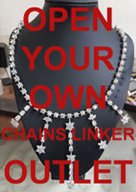|
The cut is a combination of Shape and Proportions. The shape describes the general outline of the stone, for example round brilliant, princess cut, pear shape, oval etc... Good proportions give better light reflection in the diamond and thus contribute to its beauty.
 |
Brilliant cut round - This is the most traditional and popular of all the diamond shapes. It has 58 facets and is cut to maximise the 'fire' and sparkle of the stone. This shape of diamond is most commonly found in solitaire. |
 |
Princess cut - This shape has grown in popularity in recent years, providing an excellent alternative to the brilliant cut round diamond and, by having 76 facets, often displaying even more brilliance than its round counterpart. The princess cut diamond has pointed corners, and as it is traditionally square in shape, you need to be ensuring that the length to width ratio of the diamond is as close to 1.00:1.00 as possible, as princess cut diamonds can range from this perfect square through to almost rectangular, and decreasing in value the further you move away from the perfect square shape. |
 |
Emerald cut - The Emerald cut diamond is 'Step-cut' and has rows of facets, usually 48 to 50, that resemble a staircase. The look of an Emerald cut diamond is subtle and understated, with less ‘fire’ than a brilliant cut round diamond, but provides style and elegance. Due to its larger, more open table, this shape highlights the clarity of a diamond and so this is an important factor when looking to purchase this shape of diamond. |
 |
Marquise cut - This takes its name from a legend that the Sun King desired a stone to be polished into the shape of the mouth of the Marquise of Pompadour. It has a total of 56 facets. |
 |
Oval cut - The oval cut diamond provides an excellent alternative to the brilliant cut round diamond, whilst displaying the same amount of brilliance through its 56 facets. Oval diamonds are also very popular as their length can accentuate long, slender fingers. |
 |
Pear cut - Another alternative to the brilliant cut round diamond and contains a total of 58 facets. The pear cut diamond is often also called a teardrop due to its single point and rounded end. If you choose an elongated pear shaped diamond, the length of the diamond creates a subtle slimming effect on the finger. |
 |
Radiant cut - This is a straight-edged rectangular or square stone with cut corners. With a total of between 62-70 facets, the radiant cut can offer an excellent compromise between the rectangular shape of the Emerald cut and the square shape of a Princess cut, whilst having all the sparkle of a princess cut diamond. |
 |
Heart cut - This ultimate symbol of romance is essentially a pear-shaped diamond with a cleft at the top. |
Cut also refers to the proportions, symmetry and finish of a polished diamond. To get from the raw diamond to the cut gemstone requires the skilled hand of a master cutter. The better the CUT proportions, the better the diamond handles light to create sparkle.
Therefore CUT is the single most important factor affecting a diamond's sparkle, brilliance and visual fire as illustrated with the following diagrams for a round brilliant-cut stone: A well-cut diamond reflects maximum light and so sparkles the best. Shallow-cut and deep-cut diamonds let the light escape at the sides or bottom. |
WELL CUT SHALLOW CUT SHALLOW CUT DEEP CUT DEEP CUT
   |
|














 SHALLOW CUT
SHALLOW CUT









